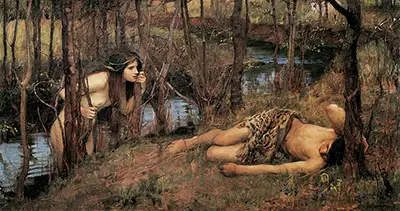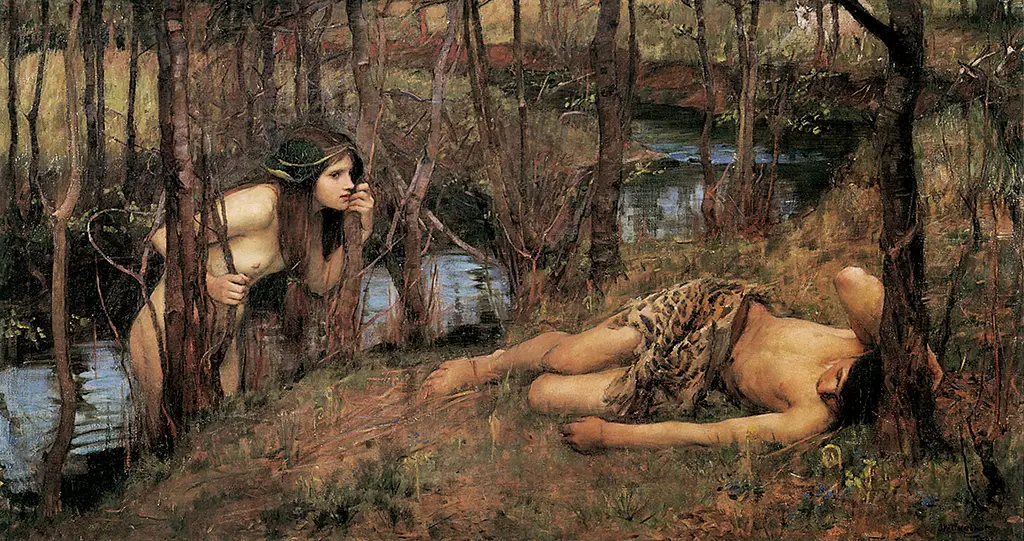Waterhouse loved to capture scenes of nymphs and other figures within the forests of the UK, having originally worked in more of a Neo-Classical style. This particular painting, The Naiad (Hylas with a Nymph), allows the artist to show him his talents for portraiture which would become an essential element to his artistic success. He generally displayed his paintings at the Royal Academy just as soon as the paint had dried and could normally find buyers fairly quickly. He worked in large canvases and more traditionally-sized ones in order to attract different types of collectors and also found this to be the best way of adapting to different sized galleries whenever he was exhibiting his work. He received some criticism during his own lifetime for sticking rigidly to a proven path, but today this has given him a consistent brand which makes his paintings instantly recognisable as being from his hand.
This painting is now believed to be a part of a private collection and there are a number of wealthy individuals who have passioniately collected the best work of the Pre-Raphaelite movement as well as a number of other artists who, like Waterhouse, worked on the fringes of this famous British group. In recent years a number of artworks from their careers have come up for auction in order to cash in on the rise in interest that they have received over the past generation or so. Whilst some have complained about the way in which Waterhouse used female models within his work, those who are knowledgeable about the content in his paintings better undestand that his work is more of a celebration of the female body as well as being a visual display of various items of literature that were important to him.
British art reached a pinnacle during the Victorian era, in the eyes of many, thanks to a number of artists who worked in a relatively traditional way and focused mostly on various types of portraiture. Female models were key to their compositions, with some choosing Neo-Classical styles, and others going for more recent influences from British literature. Waterhouse did both, leaving a contrast between different parts of his career, but someone who stuck closely to one approach was Lawrence Alma Tadema, who gifted us the likes of A Reading from Homer, Egyptian Chess Players and Unconscious Rivals having arrived from the Netherlands and set up a strong career within the UK. His artworks often featured huge numbers of figures, far more than Waterhouse would choose to use, giving an exciting alternative with some particularly large canvases that were necessary to fit in such high levels of detail.


